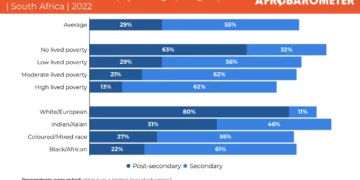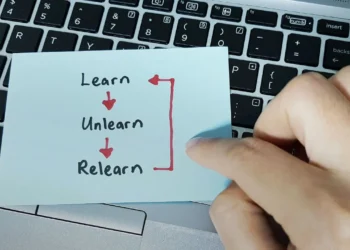
When you look at the greatest leaders in various strata, you will find that the common denominator amongst them is the ability to communicate effectively. This underscores the importance of communication skills in whatever field you may find yourself in.
Years ago, the Conference Board of Canada, an independent research organisation, developed the Employability Skills 2000+, which lists the critical skills employees need to succeed in the workplace. Communication skills, top the list of fundamental skills needed to succeed in the workplace. It’s our responsibility to keep honing our communication skills for optimum results at the workplace.
Think Before You Speak.
Always pause before you speak, not saying the first thing that comes to mind. Take a moment, and pay close attention to what you say and how you say it. This is one habit that will enable you to avoid embarrassment and regrets. Remember, once you say it, you can’t unsay it. You won’t be able to make people forget what they heard you say easily. Commit to thinking before you speak and note the impact.
Know Your Audience
To communicate effectively, have an idea of who you are speaking to. This helps you in the selection of appropriate language. You can use acronyms and informal language when you are communicating with a friend, but if you are emailing or texting your boss, informal language has no place in your message.
You cannot assume that the other person knows what the acronym means. Some acronyms have different meanings to different people, you do not want to be misunderstood. Effective communicators target their message based on who they are speaking to. E Communication is a vital tool in every endeavour. It is one of the best ways to stimulate the brain.
Ensure you keep the other person in mind while trying to get your message across.
Keep it Short and Simple
With the short length of human attention span, you want to keep your communication cycles short and simple.
For written and verbal communication, practice being brief yet specific enough that you provide adequate information for the other person to get the message. As you plan your presentation, make sure you include the necessary details that foster understanding.
Avoid ambiguity so that your message can be well understood and if you are responding to an email, make sure that you read the entire email before crafting your response (You don’t want to respond out of context).
Use of Appropriate Body Language
Body language is the non-verbal cues deployed in the communication process. They include gestures, facial expressions, and eye gaze that communicate a person’s emotions and intentions. It has been suggested that body language may account for between 60% to 70% of all communication. Unlike words, body language is often done subconsciously and constitutes a large part of our communication content.
There are two major categories;
Positive or Open Body Language
Negative or Closed Body Language.
These two broad categories of cues signal how open (or closed) someone is perceived from how they say what they say. Whether at a networking event talking to a random stranger you’ve just met, or giving a presentation or speech, knowing how to use and read these cues is key to knowing how receptive others are to you or the situation.
Positive Body Language
Body language is the process of communicating nonverbally through body movements and gestures. Positive body language is the nonverbal movements and gestures that communicate interest, enthusiasm, and positive reactions.
How you communicate with your body is important because research shows that 60% to 70% of communication is nonverbal.
Body language is considered a crucial aspect of communication as it sends signals of how we are truly feeling. It is controlled by our subconscious mind and may not always be following what we are saying.
Highly perceptive individuals will be able to pick up on the differences between what you are saying with your words and what your body is saying with its movements and deduce how you feel.
Your voice plus the right gesture is such a powerful combination. When you begin to use it the right way, it can transform your confidence, career and even your life. How you say what you say matters twice as much as what you say. To make sure you are conveying your thoughts and opinions how you want, be intentional about your body language so that your movements match your words.
Good Eye contact
Good eye contact lets others know that you are interested in the conversation. Do you sometimes wonder why your eyes are in front and not at the back of your head? They are rightly positioned there for optimum effectiveness in communication.
Keep your head up and look at the person you are having a conversation with in the eyes, both when they are talking to you and when you are talking to them. Occasionally blink and look away so it doesn’t pass for a stare.
Open Arms
Open arms posture signifies sincerity, positivity, friendliness, trustworthiness and confidence. When you keep an open arm, you’re perceived to be interested, optimistic and open to the person/people you’re listening to.
Practice hanging your arms comfortably at your side or bringing your hands together in your lap to show others that you are open to what they are communicating.
Affirmative Movements.
While you’re listening during a conversation or communication process, you can show empathy with simple actions of agreement like nodding your head or smiling. These actions let people know that you are on their side and that you can identify with their point of view. You can even use laughter when appropriate.
Speak at a Good Pace
Take a deep breath, hold it for a second or two, and let it out before you start speaking. Focus on slowing down your speech and body movements a bit. This will make you appear more confident and contemplative. It will also help calm you down if you are nervous. You must speak at a good pace every time you engage in communication to enhance understanding of your message.
____________
Ngozi Enogieru is an experienced educator, public speaker, and writer. She is passionate about nurturing communication skills, encouraging creativity, and promoting a growth mindset. She firmly believes in the transformative power of words and their ability to shape perspectives. With a career spanning several decades in education and communication, she has guided many students through the intricacies of various subject areas, fostering critical thinking, and instilling a love for lifelong learning. She is the author of “How to Overcome the Fear of Public Speaking” a book in which she seeks to help individuals develop confidence and competence in public speaking skill. Her work has been distinguished by selfless dedication to empowering students, engaging audiences, and crafting compelling narratives. She is happily married with two adorable children. https://bit.ly/NgoziEnogierusLinkedIn https://bit.ly/ngozienogierusx https://bit.ly/NgoziEnogieruIG
https://bit.ly/eloquentdiction






































































 EduTimes Africa, a product of Education Times Africa, is a magazine publication that aims to lend its support to close the yawning gap in Africa's educational development.
EduTimes Africa, a product of Education Times Africa, is a magazine publication that aims to lend its support to close the yawning gap in Africa's educational development.

